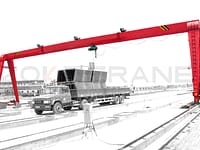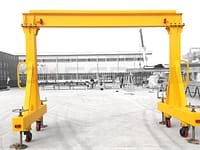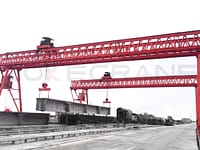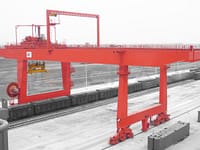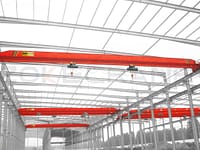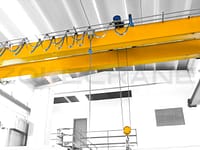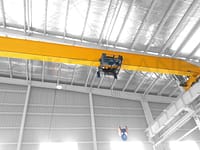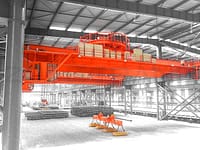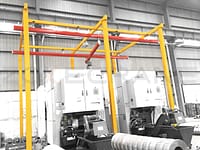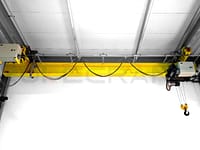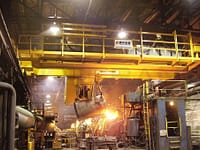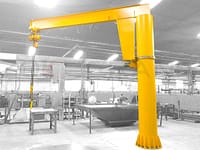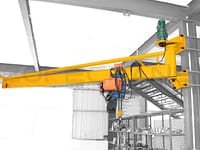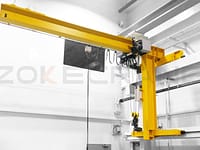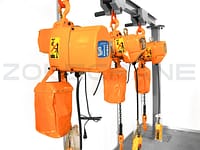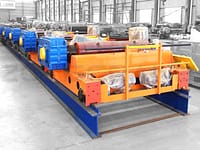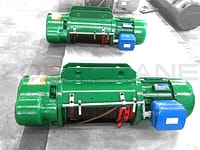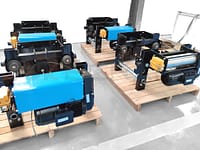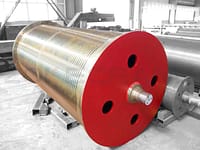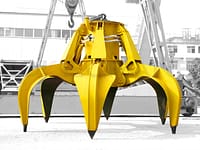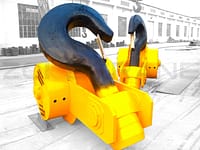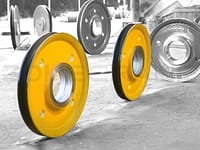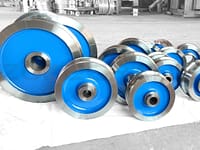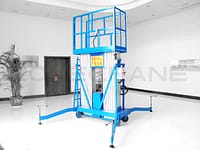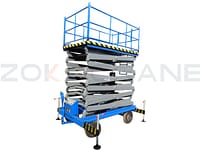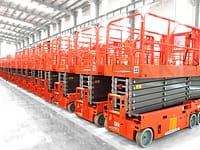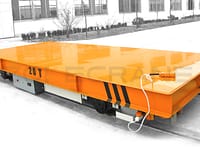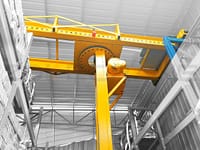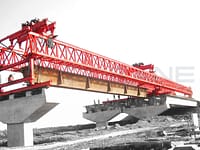Crane main performance parameters indicators: crane main parameters are parameters that characterize the main technical performance indicators of the crane, is the basis for the design of the crane, but also an important basis for the safety and technical requirements of heavy machinery.

Lifting weight G
Lifting capacity refers to the quality of the lifted weight, the unit is kg or t. It can be divided into rated lifting capacity, maximum lifting capacity, total lifting capacity, effective lifting capacity, etc.
1. Rated lifting capacity Gn
The rated lifting capacity is the sum of the materials that can be lifted by the crane together with the separable spreaders or attachments (such as grabs, electromagnetic suction cups, balancing beams, etc.).
2. Total lifting capacity Gz
The total lifting capacity is the sum of the mass of the material that can be lifted by the crane together with the separable spreader and the spreader and play fixed on the crane for a long time (including hook, pulley set, lifting wire rope and other lifting objects below the lifting trolley).
3. Effective lifting weight Gp
The effective lifting capacity is the net mass of the material that the crane can lift.
- First, the crane sign on the lifting capacity, usually refers to the rated lifting capacity of the crane, should be clearly indicated in the obvious position of the crane structure.
- Second, for the jib type crane, its rated lifting capacity is variable with the amplitude, its lifting characteristics indicators are characterized by lifting moment. The value marked on the sign is the maximum lifting capacity.
- Third, the crane with divisible spreader (such as grab, electromagnetic suction cup, balance beam, etc.), the spreader and the total mass of the material service rated lifting capacity, the mass of the material allowed to be lifted is the effective lifting capacity.

Lifting height H
The lifting height refers to the vertical distance from the top surface of the crane running track (or ground) to the upper limit position of the pick-up device, unit is m. Usually, when using the hook, count to the center of the hook ring of the hook; when using the grapple and other containers, count to the bottom of the container.
1. Drop depth h
When the fetching device can be put to the ground or below the top surface of the track, its lowering distance is called the descending depth. That is, the vertical distance between the lowest working position of the spreader and the horizontal supporting surface of the crane.
2. Lifting range D
The lifting range is the sum of lifting height and descending depth, i.e. the vertical distance between the highest and lowest working position of the spreader.
Span S
The span refers to the horizontal distance between the centerline of the running track of the bridge type crane, and the unit is m.
The distance between the centerline of the running track of the trolley of the bridge type crane is called the gauge of the trolley.
The distance between the centerline of the running track of a ground-operated jib crane is called the gauge of the crane.
Range L
The amplitude of a rotating jib crane is the horizontal distance between the centerline of rotation and the plumb line of the pickup device in m. The amplitude of a non-rotating type of jib crane is the water, level distance between the centerline of the spreader and the rear axis of the jib or other typical axis.
When the boom tilt angle is minimum or the distance between the trolley position and the crane rotation center is maximum the amplitude is the maximum amplitude; vice versa is the minimum amplitude.

Working speed V
Working speed refers to the speed of the crane working mechanism in the rated load stable operation.
1. Lifting speed Vq
Lifting speed refers to the vertical displacement speed of the crane in stable operation under the rated load, the unit is m/min.
2. Running speed Vk
The running speed of the crane is the running speed of the crane with the rated load on the horizontal road or track, the unit is m/min.
3. Trolley running speed Vt
The running speed of trolley refers to the running speed of the trolley with rated load on the horizontal track under the stable motion, the unit is m/min.
4. Variable speed V1
Variable amplitude speed refers to the steady motion state, hanging the minimum rated load in the variable amplitude plane, from the maximum amplitude to the minimum amplitude of the horizontal displacement of the average line speed, the unit is m/min.
5. Walking speed V.
Traveling speed refers to the smooth running speed of the mobile crane hanging rated load in the road driving state, the unit is km/ho
6. Rotary speed ω
Rotational speed refers to the steady state of motion, the crane rotation speed around its center of rotation, the unit is r / min.
